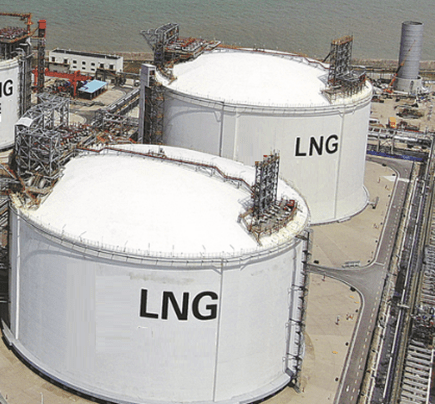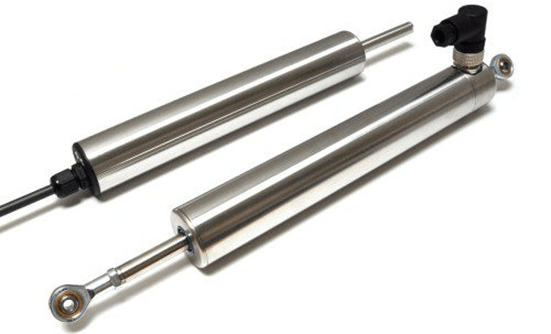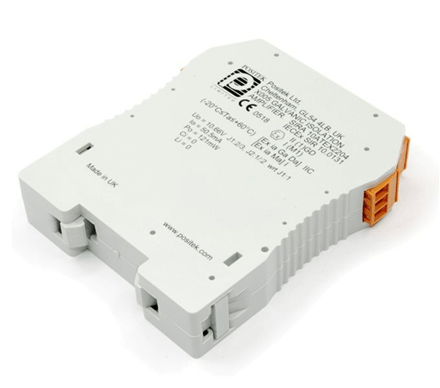
How Positek G101 Series Sensors Ensure Accuracy and Intrinsic Safety in LNG Applications
The measurement of tank expansion is a critical element in managing the integrity of liquid natural gas (LNG) storage tanks. As LNG is subject to significant temperature fluctuations—from cryogenic storage to ambient conditions—the tanks that contain it must safely accommodate expansion and contraction. Ensuring reliable measurement of these subtle changes is essential not only for operational efficiency but also for the safety of personnel and the surrounding environment. For these reasons Positek sensors can be found throughout the world in LNG applications. Among linear sensors, the Positek G101 series stands out, offering CSA approval and intrinsically safe operation for deployment in hazardous environments.
The Challenge of Tank Expansion in LNG Storage
One Everight customer has installed over 100 Positek G101 sensors in North America and Asia to monitor LNG tank expansion. A custom G101 sensor was developed including spring return, higher linearity and a scaled output specifically for their control system. LNG storage tanks are feats of engineering, designed to withstand both the physical stresses of holding cryogenic liquids and the operational realities of temperature-induced expansion and contraction. As LNG warms, it expands; if not properly managed, this can exert dangerous pressure on tank walls, potentially leading to leaks or catastrophic failure. Conversely, contraction during cooling cycles can also impact structural integrity. However, being reliable isn’t enough. The sensors must be able to operate in an environment where flammable gas may be present. Furthermore, given the size of the storage tanks, sensors need to be able to be installed 100’ or more away from the central data acquisition (DAQ) module without a loss in signal quality.
The Need for Intrinsic Safety in Hazardous Environments
Perhaps nowhere is the concept of “intrinsic safety” more vital than in LNG storage facilities. The term refers to equipment designed to operate in explosive atmospheres without posing an ignition risk because the system operates with such little power. In other words, even if a fault occurs the device will not generate enough heat or spark to ignite flammable gases.
This level of safety is typically mandated by regulatory bodies worldwide. In North America, the Canadian Standards Association (CSA) is a leading authority, defining and certifying equipment for use in hazardous locations. CSA approval is not merely a badge of compliance; it’s a rigorous process that ensures a device has been thoroughly tested and proven safe under prescribed conditions.
The Positek G101 Series: Precision Meets Safety
Within this demanding context, the Positek G101 series of linear sensors has garnered attention for fulfilling both the measurement and safety needs of LNG facilities.

Measurement Precision
Positek G101 sensors employ advanced non-contact inductive technology to measure linear displacement with exceptional accuracy and repeatability. Unlike traditional potentiometric sensors, which rely on physical contact and are subject to wear, Positek’s technology ensures longevity and stability—both critical for the continuous monitoring required in LNG storage applications.
These sensors can be configured for a wide measurement range, allowing for the detection of both tiny and significant tank expansions. Their robust stainless steel construction resists the mechanical stresses of tank operation and the corrosive effects of harsh environments.
Intrinsic Safety and CSA Approval
One of the defining features of the Positek G101 series is its intrinsic safety certification. CSA approved, they are eligible for installation in Class I, Division 1 & 2, and Zone 0, 1, or 2 hazardous locations.
Applications in Tank Expansion Monitoring
The ability to measure tank expansion accurately is pivotal throughout the LNG supply chain:
- Structural Health Monitoring: Early detection of abnormal expansion helps prevent structural failures and extends tank life.
- Leak Prevention: By monitoring for changes that could indicate overstress or deformation, operators can address issues before they lead to leaks or environmental hazards.
- Compliance and Reporting: Many regulatory regimes require documented proof that tank integrity is being monitored; data from linear sensors form a key part of this record.
- Process Optimization: Understanding the thermal dynamics of tank expansion can help optimize fill rates and reduce boil-off losses, boosting operational efficiency.
Installation and Integration Considerations
Selecting a sensor like the Positek G101 is only part of the equation. Careful installation and integration with plant systems are vital for maximizing effectiveness. Positek G series sensors can be used in combination with Positek G005 barriers. More than just a traditional Zener barrier, the G005 provides galvanic isolation as well as signal amplification, taking the output from the sensor and converting it to a voltage or 4-20mA current output. Furthermore, the G005 has an optional 5-wire installation, in which the G005 accounts for voltage loses on the wires, providing more accuracy on installations where the sensor can be as far as 1,000 m away from the barrier.

Conclusion
Measuring the expansion of LNG storage tanks is not a mere technicality; it is a linchpin of safe and efficient operation in a high-stakes industry. Linear sensors, and particularly the CSA-approved, intrinsically safe Positek G101 series, offer an elegant and reliable solution for tracking these critical changes. By combining precision measurement with compliance to the highest safety standards, they help operators safeguard their assets, their personnel, and the environment—today and into the future.



